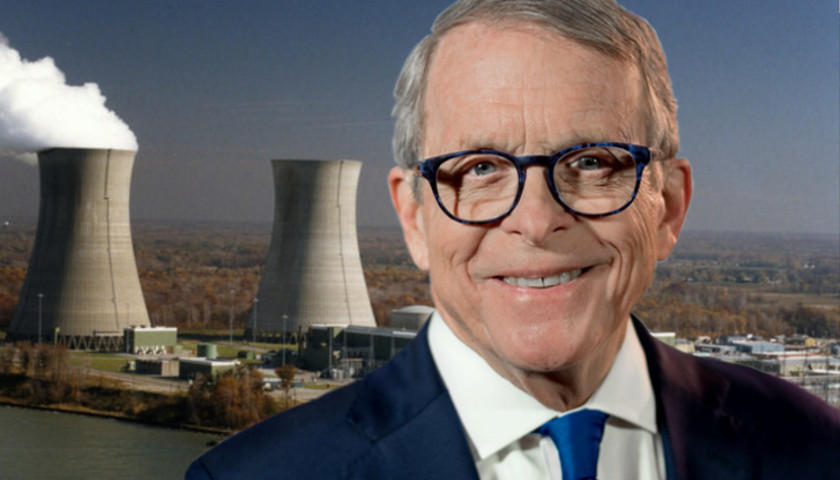COLUMBUS, Ohio – It’s been over seven months since the FBI announced a criminal complaint stemming from Ohio House Bill 6 (HB6). Arrests were made for what feds call a bribery and racketeering plan bankrolled by FirstEnergy Solutions to elect state representatives and a House Speaker that would ensure the bill passed (and stopped efforts to repeal it) – giving a $1.3 billion bailout to two Ohio nuclear energy plants.
The FBI investigation is ongoing and discoveries continue to surface detailing relationships between the energy company, political action committees, nonprofits, dark money groups, corporations and government officials.
“Dark money” refers to contributions made by donors to nonprofit corporations whose names are not disclosed pursuant to the IRS Code that allows for it.
Generation Now (which pleaded guilty to racketeering charges last month), Partners for Progress, State Solutions, and Empowering Ohio’s Economy are a pivotal few of the 501 (c)(4) nonprofit corporations into which a new report deeply dives – news that also lays out the $1 million relationship between FirstEnergy companies and Ohio Governor Mike DeWine’s campaign.
The excerpt below summarily describes the relationship between FirstEnergy, DeWine, Lt. Gov Jon Husted, as well as DeWine appointees. The full article can be viewed here – revealing the complex web of entities and people through which millions of dollars flowed.
Akron-based FirstEnergy and FirstEnergy Solutions donated more than $1 million to nonprofit groups and political campaigns since 2017 to help elect Gov. Mike DeWine, according to a Dayton Daily News investigation.
Just weeks after DeWine won in 2018, he and his running mate, Lt. Gov. Jon Husted, dined with then FirstEnergy CEO Chuck Jones and Senior Vice President Mike Dowling at the Athletic Club of Columbus on Dec. 18.
The 90-minute dinner came as DeWine was hiring key staff for his administration. Weeks after the dinner, DeWine appointed long-time energy attorney Sam Randazzo to lead the Public Utilities Commission of Ohio, which has regulatory oversight over FirstEnergy, FirstEnergy Solutions and others, and he named Dan McCarthy as his chief legislative lobbyist.
Jones and Dowling were both subsequently fired from FirstEnergy.
Prior to reports of the FBI criminal complaint, Governor DeWine appointed three people involved with FirstEnergy and dark money groups linked to the FBI investigation: Michael Koren, Sam Randazzo and Dan McCarthy.
Koren is a longtime lobbyist who lobbied for FirstEnergy. He was appointed by DeWine to the Public Utilities Commission (PUC) Nominating Council – the 12-member group charged with sourcing and checking the Governor’s appointments to the Public Utilities Commission.
PUC is responsible for regulating rates and services of public utility companies. The commission is made up of five governor-appointed commissioners (upon the advice and approval of the Ohio Senate), one of which the governor has discretion to choose as chairperson.
Koren was chairman of the panel that recommended Sam Randazzo to DeWine. Subsequently, Randazzo was appointed by DeWine to serve as a PUC Commissioner in February 2019. At that time, DeWine also announced his intent to make him Chairman. The appointment was approved by the Senate, the move to select Randazzo as chairman of PUC was the Governor’s call.
Prior to his appointment, Randazzo worked as an energy lawyer who represented companies called before the PUC and worked as a registered lobbyist representing legacy energy companies. He also had two consulting companies that did business with FirstEnergy and FirstEnergy Solutions.
In a previous report, Ohio State Senator Andrew Brenner (R-District 19) told The Ohio Star, “it’s not uncommon for someone with industry experience to get an appointment – and with something like energy, it’s important to have someone with experience.” Brenner continued, “Randazzo actually made his rounds and talked with Senators but I was not aware of his after-the-fact ties to energy companies. Frankly, I was shocked. There will definitely be much more scrutiny this time around with the governor’s appointment.”
In late November Randazzo resigned after FBI agents raided his Columbus townhouse. Randazzo was believed to be part of the organization named in an SEC filing that received more than $4 million from FirstEnergy – a payment that was purportedly part of the reasoning behind FirstEnergy firings. It was also reported that Randazzo owned a company named as a creditor in a FirstEnergy subsidiary’s bankruptcy filings.
Dan McCarthy is another longtime lobbyist who is now the Governor’s legislative affairs director. Just before accepting the job with DeWine, McCarthy founded and presided over Partners for Progress, the 501(C)4 that allegedly took in $25M from FirstEnergy and funneled $13.9M to Generation Now.
David DeVillers is the former U.S. Attorney for the Southern District of Ohio who announced last July the investigation and subsequent arrests stemming from HB6. He recently commented about the notion other high-ranking public officials might be involved beyond boundaries of the law:
“I’m not going to talk about any ongoing investigation, other than that there is one,” he said. “But yeah, basically what I’m saying is there are people who are in positions of public trust (and) it’s important to know that if we thought they were involved in something to the extent that we thought there was probable cause, we would have arrested them… You’ve got (Former Franklin County Prosecutor) Ron O’Brien — now (G. Gary) Tyak — you’ve got (Ohio Attorney General Dave) Yost, you’ve got the governor.
At this point if we thought there was some sort of probable cause that they had committed a crime I can tell you, we would have gone forward with a complaint on that.
But, the outgoing U.S. Attorney added, “It’s an ongoing investigation. If we find probable cause to believe they committed crimes, we will charge them.”
 The Governor defended his approval of the bailout bill when questioned, saying, “I believe without this bill, it would have meant that we would have had virtually very, very little non-carbon-generating energy. I think that would not have been good. We need balance in our energy and much as we would like to see other forms of energy that are non-carbon, the nuclear is where you get the most of it today, and certainly where you get the most of it in the state of Ohio.”
The Governor defended his approval of the bailout bill when questioned, saying, “I believe without this bill, it would have meant that we would have had virtually very, very little non-carbon-generating energy. I think that would not have been good. We need balance in our energy and much as we would like to see other forms of energy that are non-carbon, the nuclear is where you get the most of it today, and certainly where you get the most of it in the state of Ohio.”
In his report titled The Worst U.S. States for Public Corruption, Niall McCarthy wrote about a University of Chicago study that ranked all 50 states and the District of Columbia. The rankings were “based on an analysis of public corruption statistics from the Department of Justice,” according to the Statista writer.
Ohio ranked eighth based on the number of federal public convictions from 1976 to 2018 – all before 2020 when city councils in Cincinnati and Toledo were rocked with alleged bribery scandals, and the $61 million HB6 scheme that, if charges stick, would qualify the case as the largest corruption scandal in Ohio history.
– – –
Jack Windsor is the Statehouse Reporter at The Ohio Star. Windsor is also an independent investigative reporter. Follow Jack on Twitter. Email tips to [email protected].





